It’s not often that a brand – no matter the industry – declares they’re closing shop only to come back down the road. When it does occur, one of two things have (usually) happened. Either they’re under new management or the public sentiment is so strong that it’s simply inevitable.
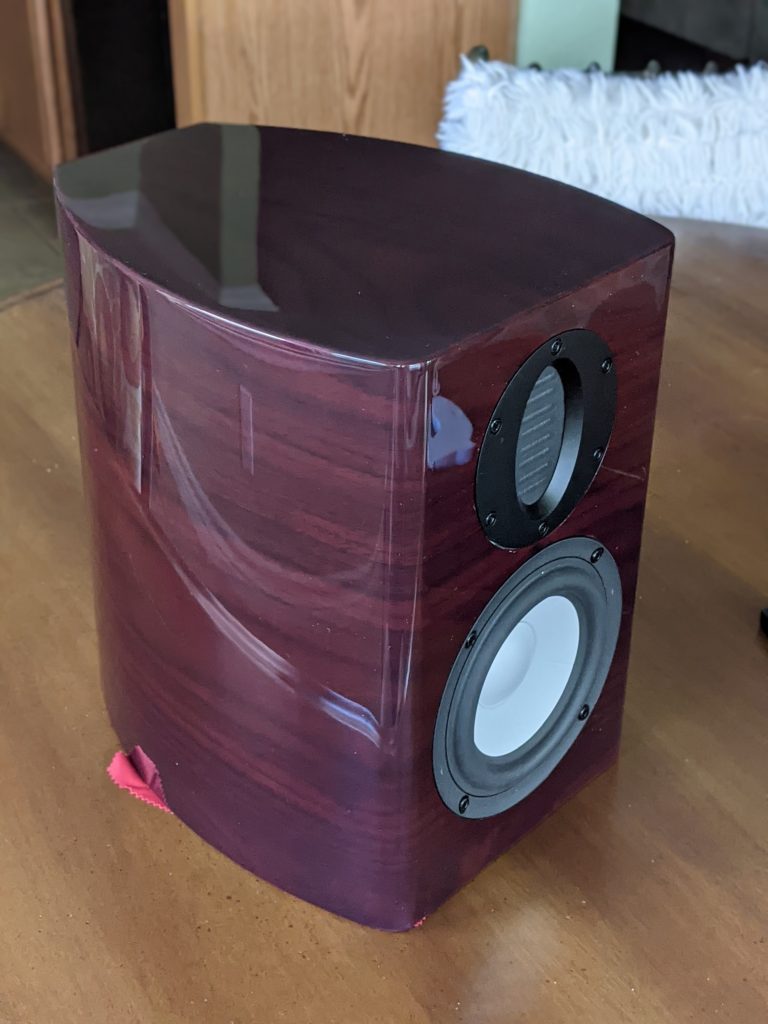
The latter is exactly what happened with Philharmonic Audio, owned and operated by Dennis Murphy, a well known crossover designer in the DIY community. Anyone who’s been in the audio world long enough will have heard his work at some point. By that same point, if you were to ask anyone in the DIY community of Dennis’s most famous speaker, you’re most likely to get one of two responses – the BMR (Philharmonitor) or the Affordable Accuracy Monitor (AAM for short).
Both of these models have proliferated the DIY industry as the epitome of performance per dollar. There were several other models offered at all price points up to his flagship Phil 3 coming in at a reasonable $3,700 per pair. While they would never win any beauty contests, they had performance that contended with speakers several times their price.
So What Happened?
As with all things too good to be true, Dennis had to close shop. Out of respect, I will just say that it was a health issue brought on by how (cheaply) he was selling his speakers. He mentioned that he would still design crossovers for manufacturers when asked but he was otherwise out of the speaker game. His speakers became invaluable overnight. The price for his BMR instantly shot up by as much as 75%.
Dennis wasn’t one to let his creations die though. Luckily, Jim Salk of Salk Sound agreed to take over the BMR speaker which can be found here. Though pricier than Dennis’s original offering, they’re worth every penny in my opinion due to the performance and sheer perfection of the cabinet work. You’re truly getting a work of art.
Fast forward to a few months ago (September 2020), Dennis mentioned that he was getting back in the speaker game with two updated designs using prefabricated cabinets built overseas. Apparently he had been working with a partner testing the viability of the new speakers on the DIY market and they were a smashing success.
The topic of today’s review is one of those two updated designs: the bookshelf Mini Philharmonitor.
Fit, Finish, and Specifications
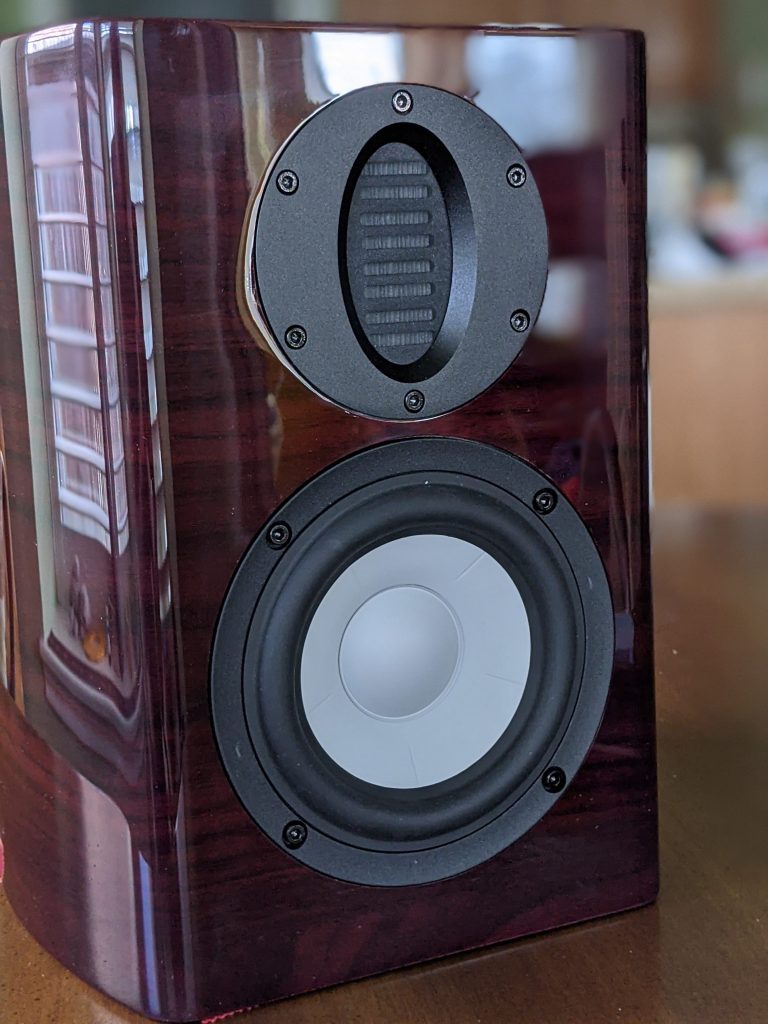
I have to say I was genuinely surprised by how nice the finish is on these speakers. To say it’s furniture grade does not do it justice. My only quibble is that they are so glossy that it became hard, at times, to capture pleasing images of them.
The packaging was secure, and while the “unboxing experience” didn’t have the pomp and circumstance of the Arteluthe La Piccolas , it was more than adequate given its price.
When you order the pair, one of the boxes will contain a demo CD that Dennis uses for setting up speakers. You’ll also catch him saying that it’s a good mix of music to allow his speakers to strut their stuff, as it were.
Onto the specifications, the Mini’s are specified as having a ported frequency response of 45 Hz – 20 kHz +/- 3db. They can also be run sealed, but this will reduce the bottom end reach to 58 Hz. Their sensitivity is rated at roughly 84 dB (dB/2.83v/1M), so they definitely will need a beefier amp if you plan on running them in a large room. In an office setup, a lower wattage amp will suffice.
The mini’s weigh in at a beefy 21 lb each, and sport an Aurum Cantus AMT for the tweeter and SB Acoustics 5″ Ceramic midrange. Before I had these plugged in, I knew they were going to be something special. I’ve heard other SB Acoustic ceramic woofers and they’ve all been terrific performers.
System Notes and Setup
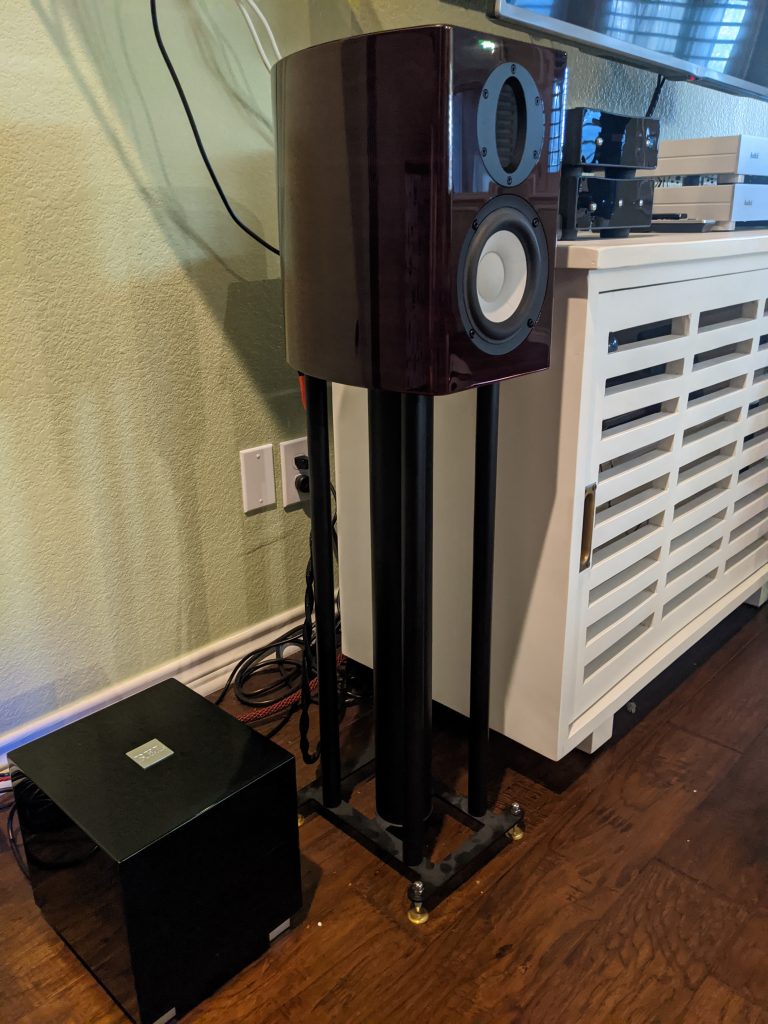
I had the Mini Phils (as I’ll call them) setup with the rest of my reference system. I’ll do a quick run-through of the components before getting to the impressions. For the most part, the Mini Phils were driven by my Rega Osiris.
On the digital side, I’m shaking things up a bit. I’m still using a Raspberry Pi for Roon, but the USB output is being fed to a Topping D90 with XLR outputs being fed into the Osiris. Normally I would be running my Audial S4, but it’s currently in my office setup being used in conjunction with Audial’s Model A integrated amp.
On the analog front, I have my trusty Rega RP10 with a Rega Aria phonostage. I’ve pondered replacing or upgrading my turntable, but every time I put on a record I’m reminded of just how great it is. The only change I would make at this point is upgrading the phono stage.
In addition, I also spent some time running the speakers in my office setup (home of my day job) where they saw daily use in a different environment and perhaps one that they’re more in tune with. More on that later
Music, Music, Music
First up is a favorite artist of mine, “Reborn” by Rameses B. I discovered them back in 2015 when I was really getting into an electronic phase and have been a fan ever sense. Their music is masterfully crafted and perfect for both background and critical listening.
With the second track, “Ecosystem”, it has become readily apparent that these speakers are capable of rendering the individual layers of music bare for all to see (or hear).
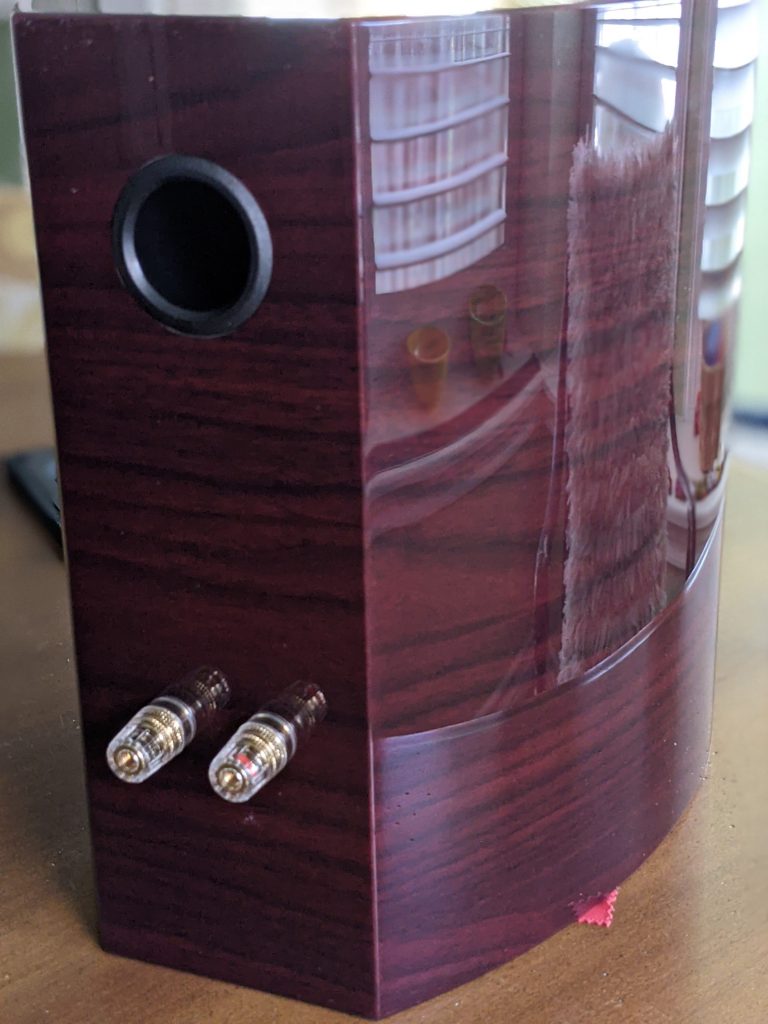
The opening of “Earth Calls” features great sound-staging and a bass drop that really tests the low-end of the speakers. As expected, these are definitely stand-mount speakers. While their depth isn’t tremendous, it’s more than I expected for a speaker of their stature. Where I find myself continually impressed though is with the tweeter. It does a great job of rendering cymbals and the like.
One thing that continued to surprise me was just how engaging these little minis are. I understand that this can mean a lot to different people. But, what do I mean by that? Simply put, they, on multiple occasions, caused me to put down my notepad and simply listen. There was a sense of ease with these monitors that you simply don’t get with the standard fare of hi-fi.
Going a bit into more detail, I chalk this up to the 1kHz+ range being open. I don’t know if I’d call it bright as my ears a quite sensitive to harshness in the 3-7kHz range. I’d simply say that it was clean. The only other speakers in my arsenal that match that “forget what you’re doing and listen” sensation are my reference RS10’s. That says a lot for monitors coming in at under a grand!
Next up is Abraham Alexander. I keep on coming back to this magnificent singer for his voice. Every time I listen to his self-titled EP, I wish there was more. “Stay” really nails what these speakers do well. And while I tend to shy away from this term, I’m here using it today. That term is musicality. The kind that just gets your foot tapping and makes you forget what you’re doing. I would be remiss if I didn’t mention that I set this album to repeat for a good hour. The mini’s are just that good.
The third track, “America”, takes a different style of music compared to what comes prior. It’s got more going on in both the bass-line and drums. While not the most technically complex, I’ve heard my fair share of speakers get it wrong by getting the balance wrong or by being able to render the leading and trailing edges of the bass properly.
The final album is Swing Lo Magellan by the Dirty Projectors. This album has always stood out to me for its vocals and mastering.
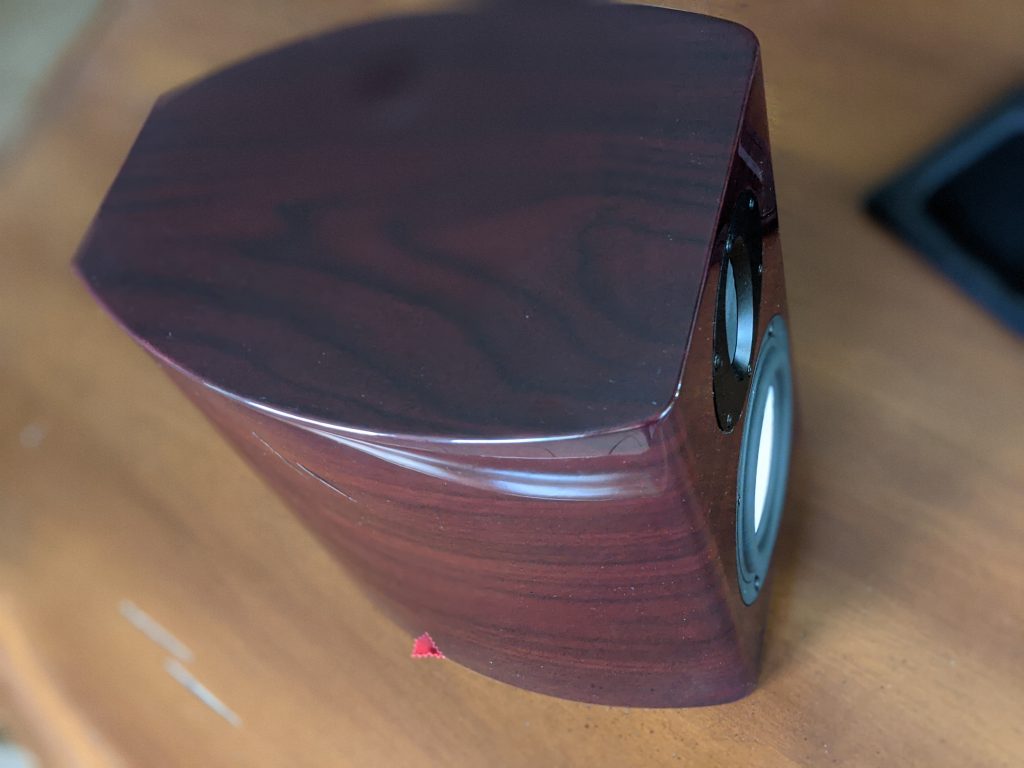
Another trait that became very apparent as I listened to these mini’s was that they are very forward in their presentation. Sometimes I can describe a speaker has rendering music as if I’m further back in the audience, but I get a ‘front row’ sense from these mini’s. That’s not a bad thing by the way, just an observation. While I’m not knowledgeable enough to know what causes that forwardness in a speaker, if I had to guess… I would say it’s related to the frequency response. Anyways!
My favorite track from the album is undeniably “The Gun Has No Trigger”. This track brought up one of the few issues I had with the mini’s. They dig deep enough to render the bass guitar, though I would have really liked a bit more oomph. You know what I’m talking about. But alas, the fact that they can dig that low is already asking a lot of a 5″ driver. So, the fact that is even able to go that deep is a major accomplishment. Still, the speakers rendered the background vocals with an eerie sense that you don’t get unless the speakers themselves are able to disappear. As far as mini monitors are concerned, this is some of the best I’ve heard in their price bracket.
“Impregnable Question” is another track where solid sound-staging and separation become ever important. None of the details were lost from left to right and I was easily able to turn it up without causing fatigue or losing that tremendous soundstage. Overall, very impressive.
I’d like to note that when it comes to a speaker’s performance, it’s not entirely the responsibility of the speaker, but also how they’re setup and the room in which they’re playing. While the room they’re in isn’t perfect, it is good enough to show off how carefully Dennis picked the drivers and designed the crossovers.
Bring in the REL’s
I thought I’d add a short bit about how well the mini’s integrated with subwoofers. For this review, I chose two of the new REL T/Zero MKIII’s that were recently released. Interestingly enough, the mini’s + dual REL’s come out at the same price point as Dennis’s new BMR’s. I think this is really interesting since it begs the question of which direction to go. Anyways!
I’ll come out and say that I did not enjoy the speakers with the port plugged. I felt them to be robbed of their low-end response and impossible to integrate well with subwoofers. This holds true for any of the rooms that I tried them in, even my office. With that out of the way…
This system transformed from enjoyable to outright top-tier with the little REL’s. They added much needed grunt to the low-end and the system really came together afterwards. Even my wife, who normally doesn’t care, commented that she enjoyed the system more than usual. If that’s not a big thumbs up, I don’t know what is!
In the Office
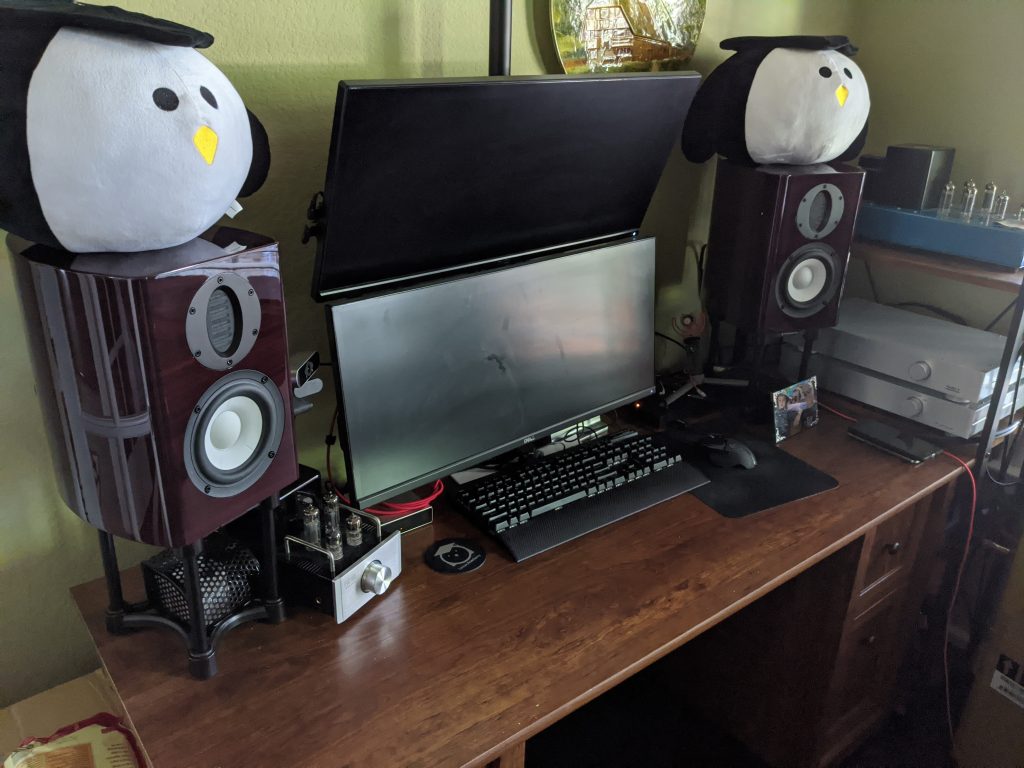
As much as I loved them in the reference room, I did find them a bit undersized for the task in the end. Don’t take this the wrong way, my main listening space is gargantuan for speakers this size. I’m used to needing larger stand-mount speakers or floorstanders to fill the space effectively. At this point, I moved them into my office to see how they sounded for some near-field listening.
Part of me wishes I started here. Listening through the same albums and tracks as before, there was a level of clarity that one seldom finds with a desktop system. The great thing about small desktop systems is that you can get away without too much bass and I think it plays to the strengths of the Mini Phils as I never found their bass output to be quite enough. They definitely needed subwoofers in my main room. Here in the office though, it’s just right.
In Conclusion
Overall, I’ve come away with a great appreciation for Dennis’s work, again. Despite my feelings of them being a little bass-light, this is easily rectified by the addition of a subwoofer or two. They showed this great integration with two REL T/Zero MKIII subwoofers. Interestingly enough, not only is this $1900 combination incredibly compelling, but it also comes in at the same price of the new BMR monitors. If I ever get the chance, I’d love to hear these two side by side.
The office setup was where the mini’s really started to come into their own and showed what they were made of. The incredible imaging and top end clarity definitely caught me off guard at times and forced me to stop what I was doing briefly to just sit back and enjoy.
If this level of performance can be had at under a grand, it makes me wonder what will be possible once Dennis unleashes the tower speakers he’s been “secretly” working on for the last several months. Only time will tell!
Until next time.

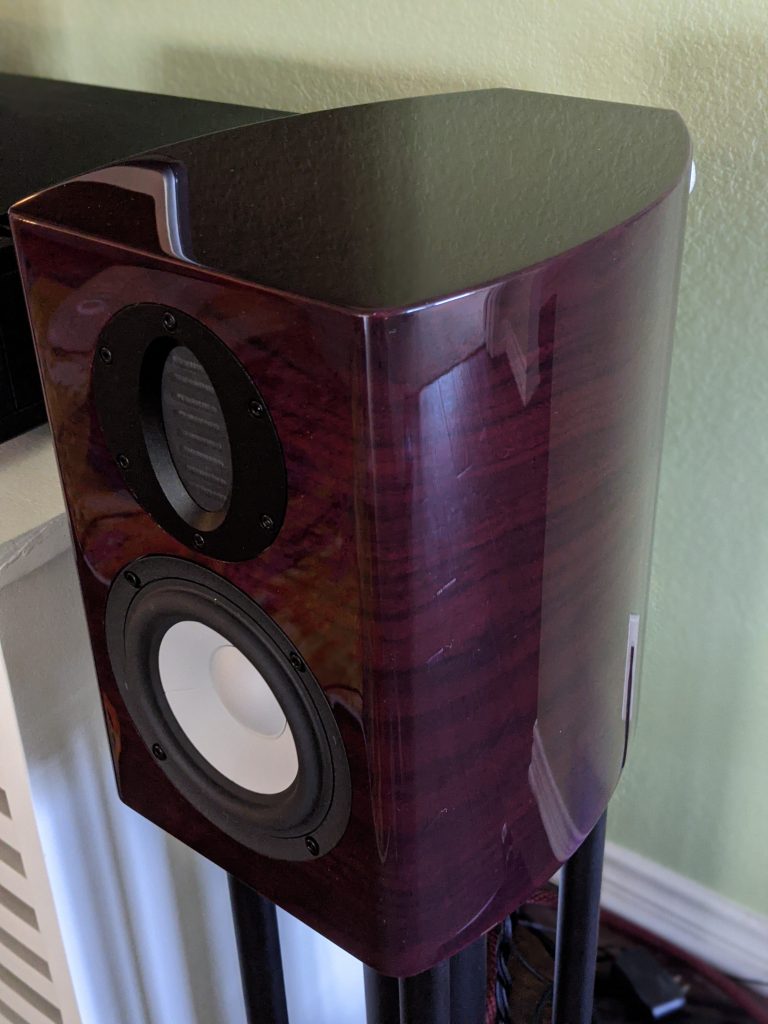
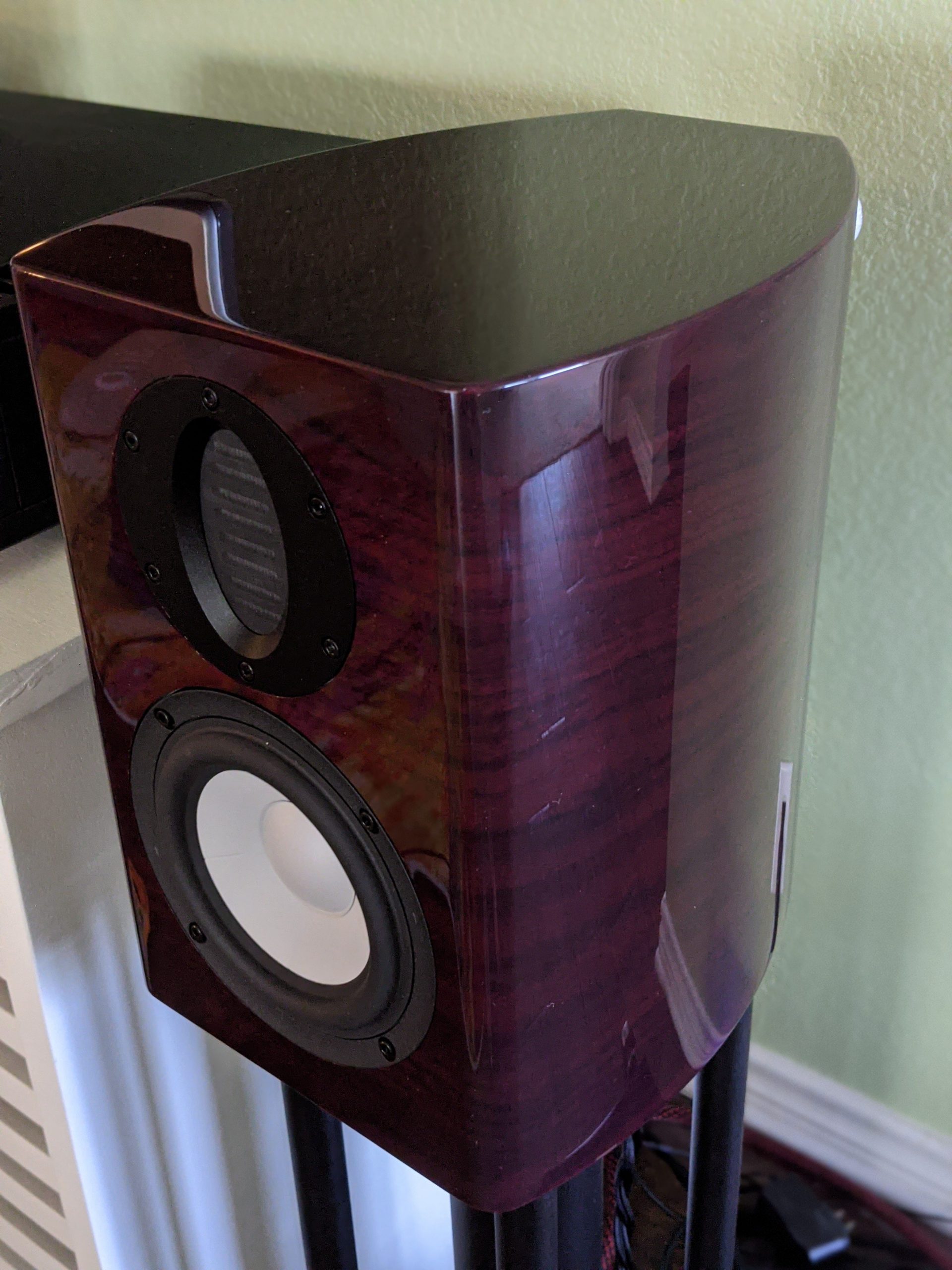
Hi! How do they compare to something like the KEF LS50? I’m very interested! Thanks.
Hey Handrio. Great question. I think they occupy different spaces. I think most people will prefer the LS50, especially if you get the wireless version. This is a rather unpopular opinion, but I find the LS50 to be a bit bright and lacking low-end punch. The Philharmonics will also have that low-end problem, but I found the mids-highs much more enjoyable, especially in a small to mid sized room. Both will require a subwoofer to augment low-end extension in larger rooms.
In the end, I think it comes down to what you’re looking for. Do you want a no-fuss high-end system? Get the LS50’s. Do you like the thought of mixing and matching components or being able to upgrade as newer and better things come out? Get the Mini’s.
Thanks Matthew! I never realized you replied to my comment because I didn’t fill in my email haha–not gonna repeat that mistake this time!
I have been auditioning the Mini Monitors for the last 2 weeks or so. Due to my own stupidity, I didn’t set the amp’s gain setting to its max and therefore the Minis distorted when intense high frequency passages were played–which I perceived as harshness in the highs. I figured out the problem, and now with the amp’s power fully available to the Minis, damn these monitors are really something. Why don’t I see more reviews on them?? Yours is the only one so far it seems! Someone also gotta do a comparative review of the Minis vs. the new LS50 Metas! If the former is superior, it’s really a great value. Now, I am on the fence to go up the ladder and get the BMRs instead.., but I am a bit worry of how they will perform in my small 9×11 feet room. I’m waiting for Dennis to advice me on that. Let me know if you have any insights on these Minis vs. the BMRs in my small room. Thanks!